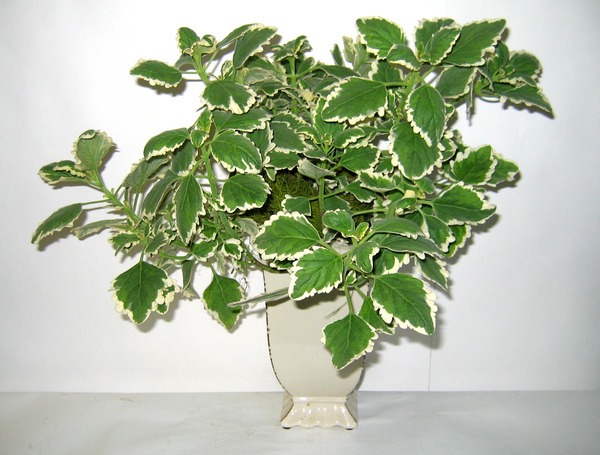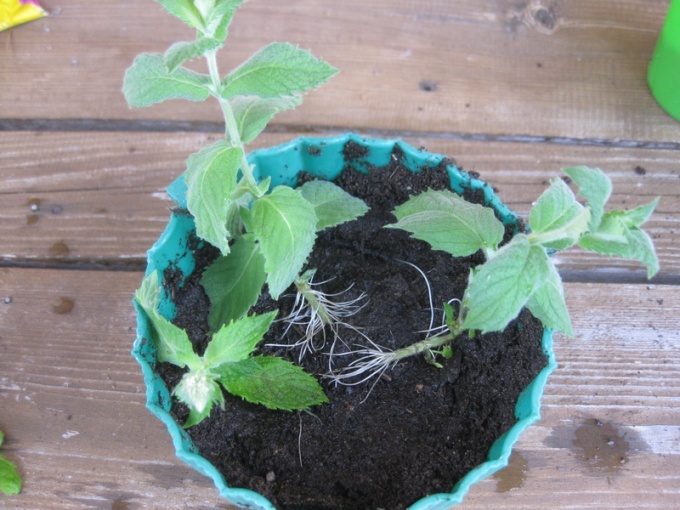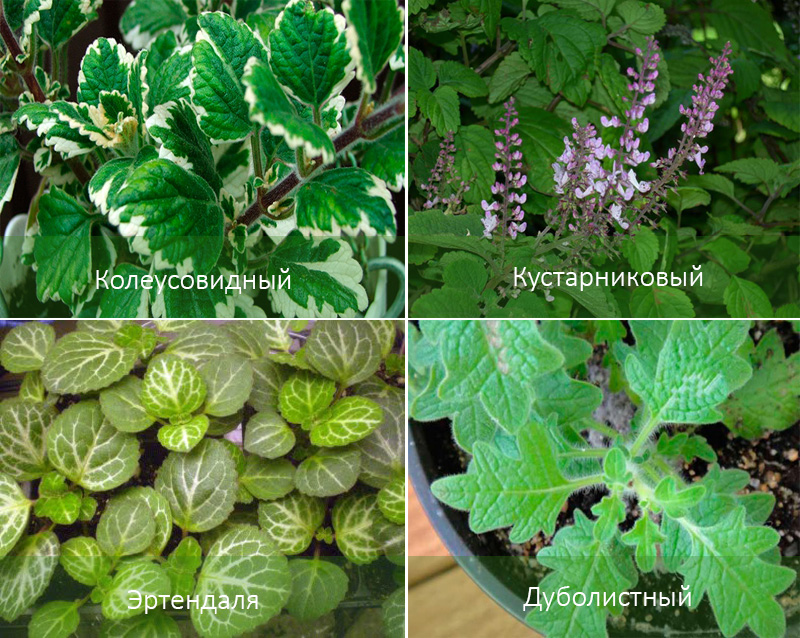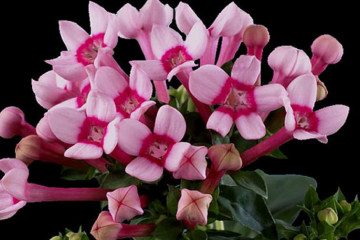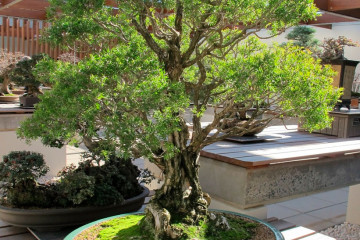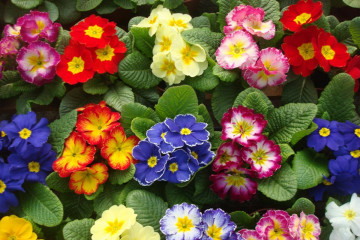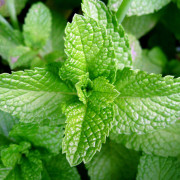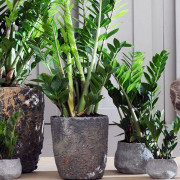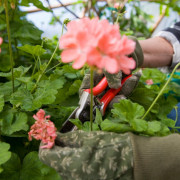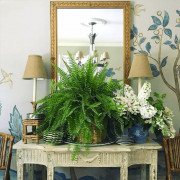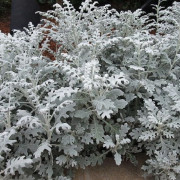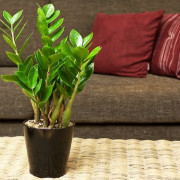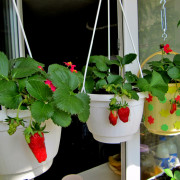Indoor mint: home care and breeding methods
Content:
Indoor mint (plectranthus) is a perennial evergreen plant of the Yasnotkov family. Plectrantus came to Russia from South Africa, the individual is also common in Australia. The genus unites 250 species of herbaceous perennials and shrubs, rich in spectacular foliage with carved edges, variegated white-cream color. It blooms with white, lilac, purple bells, collected in multi-flowered inflorescences. The culture takes root well in room conditions with moderate heat and moisture.
Home care
Lighting
Housemint develops actively in bright but diffused light. Direct sunlight is not recommended. Placing a pot of mint on the windowsill on the south side of the room, you should provide for the mandatory protection of the culture with a screen. With short daylight hours, the bush needs additional lighting with a neon lamp.
Watering
From spring to the end of summer, homemade mint is watered according to the formation of a dry crust in a pot (the optimal interval between moisture is 3-4 days). In the autumn-winter period, watering is reduced to moderate, moistening the soil a day or two after the top layer of the soil dries up. Overdrying of an earthen coma provokes poor flowering and dropping of buds, waterlogging leads to rotting of the root system and parasitism of the individual. For irrigation of the culture, settled water at room temperature is used.
Air humidity for the mint tree does not play a role at temperatures below 22 degrees, in a more sultry period from drying out, the individual is sprayed. Lack of moisture on the leaves and stems threatens with rapid evaporation and loss of accumulated moisture. Indoor mint will wither.
Priming
The soil used to grow the molar tree should have a low density. There are five main components of the substrate for room mint: in an equal proportion of humus, sod and leafy soil, as well as half a part of river sand and peat. In the absence of leafy soil is replaced with ordinary garden soil. It would be useful to add perlite, which regulates the moisture content of the substrate and gives it "airiness".
Temperature regime
In its natural habitat, decorative mint grows in the shade of tropical trees at a temperature of 20-22 degrees. For domestic varieties, the room air mode is quite suitable. Cooling the room to 15 degrees provokes foliage falling, further death of the plant.
Topping
Pruning young shoots of plectrantus is a prerequisite for the formation of a lush bush. To get the molar tree "paws" hanging from the planter, pinching should be done more often. The procedure involves shortening weak and leafless shoots in half. The cut stems and leaves of the mint tree are suitable for preparing spicy dishes and antibacterial medicines.
Plant transplant
A mint transplant is required immediately upon purchasing an indoor flower.Keeping the integrity of the earthen coma, the plant is carefully moved into a flowerpot with a larger diameter. For 5 years, the transplant is carried out annually, in subsequent periods - once every 2 years. When the threat of spring frosts disappears, the culture is ready for transplantation into the soil. Manipulations are performed at the beginning of the growing season.
Diseases of roommint
Blackening of the leaf
If the tip of the leaf turns black and dry, there are several reasons: low air humidity, hard water for irrigation, high room temperature or, conversely, low. Dry darkening is often the result of a burn. For watering indoor plants, it is good to use thawed and rainwater at room temperature. To avoid burns, it is important to prevent the leaves from coming into contact with the window, to avoid direct sunlight. Mint grows well in partial shade.
"Sluggish", soft or wet shading is a sign of abundant watering, too low room temperature, drafts, or excessive soil compaction in the pot.
If the blackened areas on the leaves become wet, slippery, root rot is possible. After removing the flower from the container, it is necessary to examine the processes and trim the damaged roots to white healthy tissue. Sprinkle the cut with charcoal and transplant the specimen into a larger pot.
Drying of the leaf
If the mint flower dries up and crumbles, the plant lacks moisture. Elongated stems and small pale leaves are formed when there is a lack of light. In too bright sun, the leaves turn yellow and curl or turn brown and dry.
Reproduction methods
For reproduction of plectrantus, cuttings, seeds or division of the bush are used. The methods are simple and effective, 96% of the planting material will quickly take root in a new flowerpot.
Cuttings
Fragrant plectrantus is easily propagated by cuttings and leaves. You can perform the procedure all year round. The main thing is to use healthy processes. The cut tops are immersed in a glass of water (in the case of a sheet, it is worth excluding the contact of the sheet plate with water). After 1-2 weeks, the roots will appear, the plant will be suitable for transplanting into a pot of soil.
Dividing the bush
The method is effective for the annual transplantation of a culture with a developed root system. The processes separated from the rhizome of the main flower are immediately seated in separate containers with a pre-prepared substrate.
Stages of the procedure:
- The Indian borage is taken out of the pot and lightly shaken off the soil from the roots.
- The rhizome is divided with a sharp blade.
- The cuts are treated with coal, preventing decay of the processes.
- New fragments are transplanted into appropriate tanks.
- Slightly moisturize the soil mixture and provide proper care.
Planting seeds
Room mint seeds germinate in spring at 20-24 ° C. It is enough to scatter the seeds over the soil, slightly pressing individual fragments into the soil. Plectrantus will emerge within a week and will need moderate watering. A month later, the grown seedlings are transplanted into flowerpots with soil.
Using mint
Evergreen Mexican mint has analgesic, expectorant, diuretic, anti-inflammatory and diaphoretic properties, is known for moderate sedation and is an excellent antioxidant.
The scope of application of Cuban oregano is quite wide:
- In cooking.Plectrantus is a spicy crop similar in aroma and flavor to oregano and thyme. Fresh and dried leaves of room mint are seasoned with vegetable, meat, chicken dishes. Mint gives an exquisite taste and delicate aroma to lamb, beef and game. Spanish thyme adds a special charm to stews, fillings, soups and sauces.
- In floristry. Plectrantus is a favorite culture of most flower growers. The decorative and antibacterial properties of a houseplant with the smell of mint and lemon induce many florists to use the flower in the decor of a room, terrace, balcony, winter garden, greenhouse. In the subtropics and tropics, French thyme is a frequenter of gardens and vegetable gardens.
- In medicine. The benefits of plectrantus in folk medicine are achieved by phytoncidal properties, expectorant, diaphoretic, diuretic, anti-inflammatory and analgesic effects, and has a moderate sedative effect.
- At home. The pleasant lemon-mint aroma of plectrantus and the phytoncidal characteristics of room mint are highly appreciated by residents of many countries when creating sachets for flavoring linen and clothes.
At home, you can grow several varieties of room mint. Among Russian gardeners, varieties are popular: Ernst's bush, felt mint, Limelight, Ertendal's variety, whorled, Uwongo, Mona Lavender. The Madagascar culture is considered the most beautiful (the second name is coleus-shaped plectranthus).
Video
